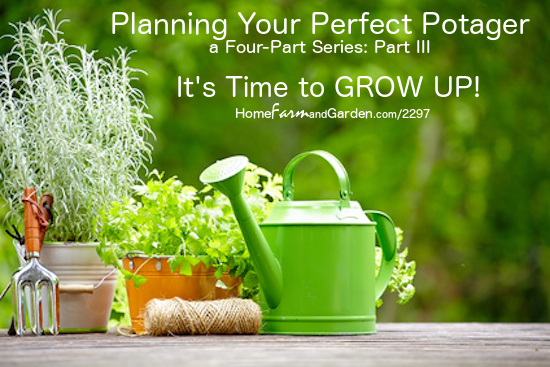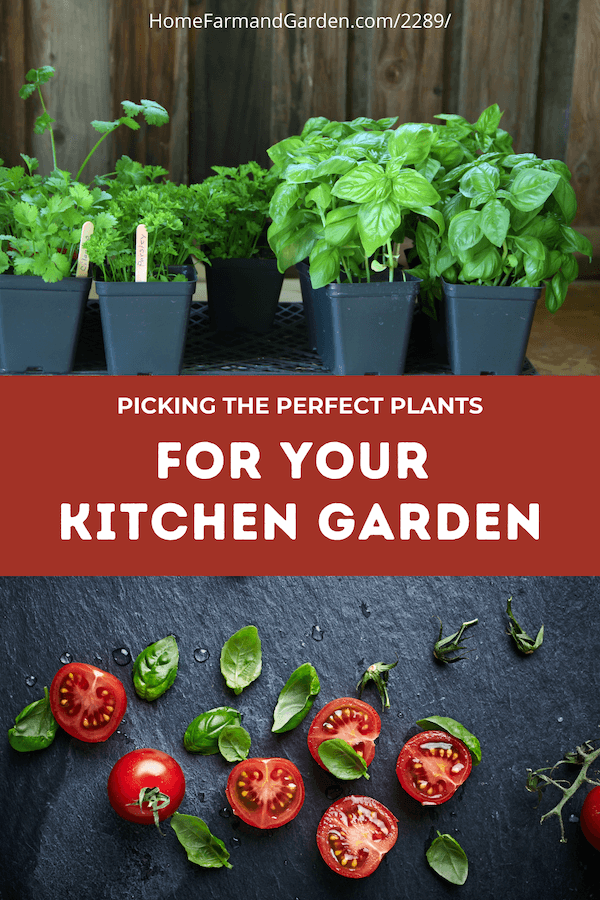Over the last couple days we’ve been talking about how to create a specialized culinary garden or potager.
You can see the first two entries in this series here: Picking the Perfect Spot for Your Potager and Picking the Perfect Plants for Your Potager.
Today, let’s take a look at how you can tap into unused vertical space ABOVE your potager …

Due to their proximity to the house, many kitchen gardens are confined to a relatively small space. If your proposed potager has a small overall footprint, don’t get discouraged.
All you need to do to maximize it is LOOK UP!
In other words, you want to take advantage of as much vertical space above your growing area as possible. Most gardeners don’t realize there is approximately 6 vertical feet of prime growing space right in front of them, because all they “see” is open air.
To use this valuable vertical real estate, you might consider staking up juicy yellow pear tomatoes surrounded by creeping thyme in a vertical container or using hanging baskets suspended on shepherd hooks for your favorite herbs. (Just make sure you keep them well watered as hanging baskets tend to dry out more quickly than in-ground plantings).
You could also add a stylish trellis or incorporate a fence into your design to provide support for climbing plants, such as pole beans or cucumbers. If your potager has a blank wall with good sun exposure, you could add a ladder-like series of shelves to house a lot more plants than you could fit into the ground you have available.
Advantages to Vertical Gardening
There are many advantages to growing your vegetables vertically in both traditional gardens and potagers. For starters, you can grow more food in a smaller area, which is great for urban gardens or those with limited growing space. Plus, growing vegetables on structural supports makes harvesting and weeding around your plants a lot easier. This is especially true for older individuals or those with other physical restrictions because less bending and stretching is required to perform these tasks.
Growing vertically benefits your vegetable plants, too. Raising the plants off the ground leads to better air circulation around them, which is associated with fewer fungal infections and pest infestations.
So, as you are scouting out the perfect spot to start your kitchen garden, think about what vertical elements you can add or which existing elements you can incorporate into your growing plans.
Tomorrow, we’ll talk about how to pull it all together – beautifully. 🙂
Til Next Time,

PS Let’s Keep in Touch! Use the form below to sign up for periodic updates on new articles like this!
 Picking Plants for Your Potager
Picking Plants for Your Potager